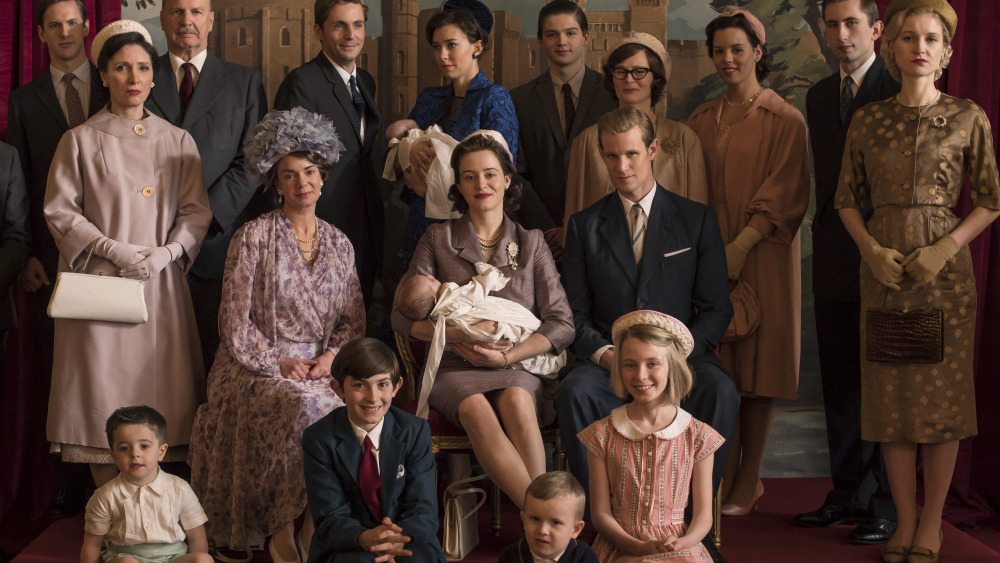Royal Family: Media Representation And Public Perception
Does the glitter of the crown obscure the human beneath? The portrayal of royalty in the media isn't merely a reflection of reality; it's a carefully constructed narrative, shaping public perception and wielding immense power. From the meticulously crafted image of Queen Elizabeth II in Netflix's The Crown to the casual snapshots of European royals on Instagram, the media's lens both elevates and scrutinizes these figures, blurring the lines between public persona and private individual.
This intricate dance between monarchy and media has intensified in the digital age. The rise of social media platforms like TikTok, where snippets of The Crown are presented as historical fact, raises crucial questions about the nature of truth and the responsibility of both creators and consumers of media. How do we reconcile the inherent human fallibility of royals with the symbolic weight of the crown? And how can we navigate the deluge of information, separating the meticulously staged performance from the genuine human experience?
| Name | Queen Elizabeth II |
| Born | April 21, 1926 |
| Died | September 8, 2022 |
| Reign | February 6, 1952 September 8, 2022 |
| Spouse | Prince Philip, Duke of Edinburgh |
| House | Windsor |
| Website | https://www.royal.uk/ |
The inherent tension lies in the dual nature of royalty. They are simultaneously public figures, subject to scrutiny and tasked with upholding tradition, and private individuals, navigating the complexities of family and personal life. The Crown, while undeniably a work of fiction, taps into this duality, exploring the personal sacrifices, internal conflicts, and emotional burdens that accompany a life lived in the public eye. The shows popularity speaks to our enduring fascination with royalty, but also raises ethical questions about the potential to manipulate historical narratives for dramatic effect.
Consider the depiction of Queen Elizabeth's relationship with Prime Minister Tony Blair. While the shows creators insist on emotional authenticity, the imagined conversations and private moments inevitably shape our understanding of these figures. This blurring of fact and fiction becomes even more problematic when consumed through the lens of social media, where decontextualized clips are presented as verifiable truth. The "Ladies and gentlemen, the new king," caption accompanying a scene from The Crown on TikTok illustrates the potential for misinterpretation and the erosion of the distinction between entertainment and historical record.
The media's influence extends beyond shaping individual perceptions; it also affects the very image that royal families strive to project. Historically, royal image management was a carefully orchestrated affair, controlled through official portraits, public appearances, and limited media access. However, the rise of social media has democratized the narrative, allowing for more diverse and often unfiltered portrayals. While this can offer a more nuanced understanding of royal life, it also presents new challenges. How can royal families maintain control over their image in a world where anyone with a smartphone can become a broadcaster?
The challenge is further compounded by the publics insatiable appetite for information. As of October 2022, approximately 4.74 billion people worldwide used social media, spending a significant portion of their time consuming news and entertainment. This constant demand for content fuels the media's relentless focus on royalty, often prioritizing sensationalism and personal drama over nuanced analysis. The media's portrayal of Princess Diana exemplifies this tendency, her life transformed into a soap opera played out on a global stage. The tragic consequences of this relentless scrutiny serve as a stark reminder of the human cost of media obsession.
The debate surrounding the medias portrayal of royalty is not limited to the British monarchy. The 1959 wedding parade of Crown Prince Akihito and Crown Princess Michiko in Japan, which contributed to the popularization of television, highlights the long-standing relationship between royalty and media. This event marked a shift towards a more modern and accessible image of the Japanese imperial family, demonstrating the power of media to shape public perception across cultures and generations. The media's role is not simply to report on royalty; it is to actively construct and reconstruct their image, influencing our understanding of their role in society.
Ultimately, the responsibility for navigating this complex media landscape rests with both producers and consumers. Media outlets must strive for accuracy and avoid sensationalism, while consumers must cultivate critical thinking skills and engage with media content responsibly. The crown, both as a symbol and a reality, represents a complex interplay of power, image, and human experience. Understanding the media's role in shaping our perception of royalty is crucial for fostering a more informed and nuanced dialogue about the role of monarchy in the 21st century.



Detail Author:
- Name : Omer Thompson
- Username : ricardo52
- Email : leannon.vernie@medhurst.com
- Birthdate : 1983-07-28
- Address : 6942 Cooper Ford Lake Patriciahaven, TN 07095-5177
- Phone : (341) 221-3001
- Company : Heller-Lowe
- Job : Surgical Technologist
- Bio : Dolore facilis mollitia aperiam eos quis et. Quos natus delectus dolorum. Expedita praesentium id sed perspiciatis qui.
Socials
tiktok:
- url : https://tiktok.com/@patsy_xx
- username : patsy_xx
- bio : Eaque autem accusamus et amet. Nobis dicta inventore et cum saepe perspiciatis.
- followers : 1364
- following : 2711
linkedin:
- url : https://linkedin.com/in/patsy_kunze
- username : patsy_kunze
- bio : Quidem et omnis ad et molestiae dolorem aut.
- followers : 1949
- following : 141
facebook:
- url : https://facebook.com/kunzep
- username : kunzep
- bio : Magnam ut quia amet nemo placeat. Ut voluptatem asperiores dolorum sunt.
- followers : 1704
- following : 377